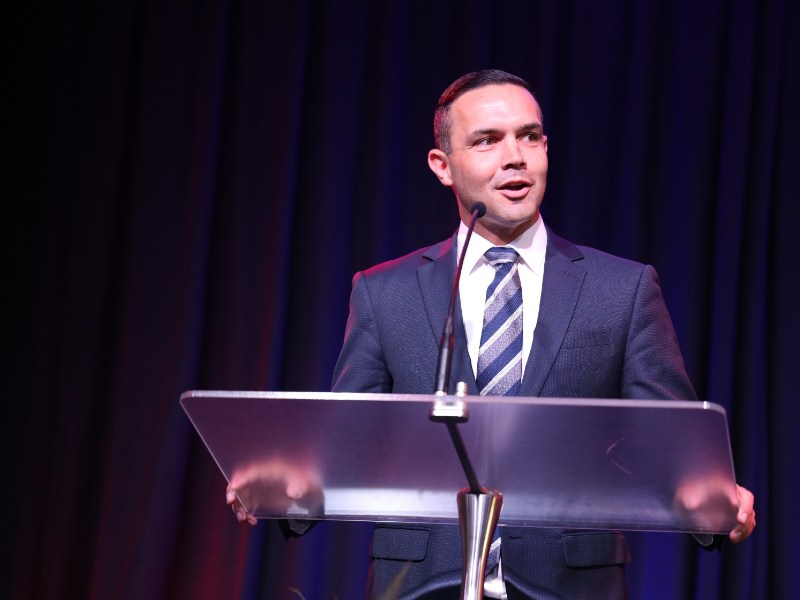Australia’s AI future is uncertain, because Anthony Albanese’s government cannot provide regulatory clarity on our nation’s AI path forward.
We know AI presents the single greatest opportunity in a generation to lift productivity and drive Australian based innovation – but for every day that Labor ministers are squabbling about AI’s implementation, Australia loses its global competitive advantage and ultimately, Australians lose out.
It’s a little like setting out on a bushwalk. Your aim is to go exploring and experience new things, but you don’t go bushwalking without a map.
You’re not looking at the map at every moment, your eyes are up, soaking in your new environment. But you do want an idea of what’s up ahead so you can prepare for things you might encounter – like cliffs and caves, or that you should pack a snack, because it’s going to be a long walk.
A map in the back pocket provides a level of certainty as you take each step forward.

To navigate the evolution of AI in Australia, our journey requires regulatory certainty, in the form of an Australian AI Strategy that can drive us forward with clarity.
According to the Productivity Commission’s Interim Report on Harnessing Data and Digital Technology, released last week, AI has the potential to boost Australia’s economy by $116 billion over the next decade. This would equate to an annual $4,300 wage increase for the average worker.
Some estimates herald gains from AI as great as $600 billion by 2030, through increased productivity, improved output quality, new businesses, and importantly, new jobs.
These are not theoretical benefits. They’re real and within reach, but only if Australian businesses have the confidence to invest.
Right now, that confidence is being undermined by tension between Labor ministers, who are sending mixed signals and sowing confusion.
Labor’s Assistant Minister for Productivity and former economist, Dr Andrew Leigh, has highlighted “significant benefits” to productivity from AI. He even urged caution against unnecessary regulation which would stall AI’s deployment, saying we need to resist sweeping moves like an AI Act, in favour of technological neutrality and regulatory proportionality that retains flexibility for innovation.
Contrast this with Labor’s Minister for Industry and Innovation, Senator Tim Ayres, a former unionist, who explicitly supports entrenching unions and restrictive regulation in AI rollout.
He envisions a world where “unions should play a key role in how companies deploy AI across their operations”.
Victorian Trades Hall want “Union Oversight over Workplace AI Systems”, Workplace AI Risk Assessments, and to prohibit “unacceptably risky forms of AI use”.
This is not a coherent policy agenda. This ministerial inconsistency is a recipe for investment paralysis.
When business doesn’t have clear guidelines, or worse, fear they could change without notice, they delay or cancel investment.
This is particularly true for transformative technologies like AI, which often require upfront spending on infrastructure, training, and system design. As the Tech Council of Australia noted, “Uncertainty around future regulation is one of the top barriers to AI adoption among Australian businesses.”
Small and family business, which make up over 97 per cent of all Australian businesses, are the ones most in need of regulatory clarity. They can’t afford to invest in tools with the risk they may soon become non-compliant or subject to costly new assessments.
Australians want to use AI and they’re already doing so. Recent data shows Australia is among the top 10 global users of ChatGPT, with usage doubling in the past year alone. We’re an engaged, curious, and digitally capable population. But enthusiasm must be matched by confidence, and confidence is built on certainty.
As long as the Albanese government continues without a single, unified voice on the regulatory direction of AI in Australia, we will lag behind.
Every G7 nation has an AI strategy and has done for many years. Comparable economies in our global region have made their direction clear.
We’ve seen discussion papers and departmental working groups, but no strategy, no clarity, and no certainty.
The Prime Minister and Treasurer must put internal factional battles aside and take a position.
The government should develop and adopt an Australian AI strategy that clearly sets out our regulatory principles, including transparency, accountability, safety, and innovation-enablement. These principles should guide government actions and signal to industry what is expected – providing them certainty to innovate and invest.
If the Albanese government is serious about unlocking the benefits of AI, it must provide regulatory certainty now, before investment moves offshore.
Australia has the talent, the tools, and the ambition, but without a map, we’ll be lost in the bush.
Aaron Violi MP is the Liberal Member for Casey. He is Co-Chair of the Parliamentary Friends of Innovation & Start-ups and is the Chief Opposition Whip
Do you know more? Contact James Riley via Email.
